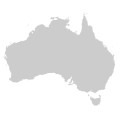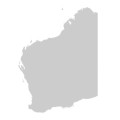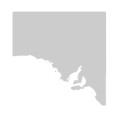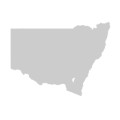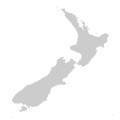Hirschfeldia incana
(L.) Lagr.-Foss. Buchan WeedStems erect, to 1 m high, bristly. Leaves bristly; lower leaves petiolate, to 35 cm long, pinnately-lobed, terminal lobe ovate, irregularly toothed; upper leaves smaller, sessile, simple, oblanceolate, toothed. Sepals 3–4 mm long; petals 6–9 mm long, yellow but often purple-veined. Fruit appressed to stem or rarely spreading obliquely, 0.7–1.7 cm long (including beak), 1–1.5 mm wide, terete; valves slightly constricted between seeds, glabrous or hairy; beak 3–6 mm long, usually with 1 seed (seeds rarely 0 or 2); pedicel 2–5 mm long, thick; seeds c. 0.5 long, red-brown. Flowers Sep.–Jan.
GleP, Brid, VVP, VRiv, MuF, GipP, OtP, WaP, Gold, CVU, DunT, EGL, EGU, HSF, HNF, Strz. Also naturalised WA, SA, Qld, NSW, Tas. Native to Mediterranean region. A noxious weed in parts of South Australia, but principally a weed of roadsides and fence-lines.
Hirschfeldia incana is characterized by its appressed fruits with a swollen beak usually containing a single seed. The fruits have been described as like an old-fashioned clothes peg (Rich 1991). Brassica nigra also has appressed fruits but the beak is seedless and not swollen.
The young inflorescences can be eaten like Broccoli.
Entwisle, T.J. (1996). Brassicaceae. In: Walsh, N.G.; Entwisle, T.J., Flora of Victoria Vol. 3, Dicotyledons Winteraceae to Myrtaceae, pp. 399–459. Inkata Press, Melbourne.
 Spinning
Spinning
